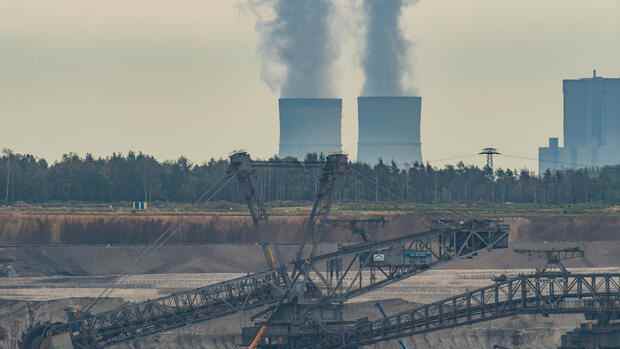Stopping coal mining is not enough: companies must reduce emissions in all value chains
(Photo: dpa)
Berlin A few days before the start of the World Climate Conference in Glasgow, Scotland, the climate protection efforts of companies are increasingly coming into focus. The environmental organization WWF calls on the economy not only to reduce its own climate-damaging emissions, but also to take a closer look at the upstream and downstream value chains.
That is “not easy, but central to the 1.5-degree climate target,” said Sebastian Öttl, expert on sustainable corporate management at WWF Germany, the Handelsblatt.
According to Öttl, emissions in the upstream and downstream value chains make up the majority of total emissions, often more than 70 to 80 percent, depending on the industry and business model.
Companies would only live up to their responsibility for climate protection through a holistic strategy that reduces emissions along the entire value chain, invests in climate and nature protection and campaigns for real climate protection among partners and politicians, according to the WWF, which this Tuesday published a guideline for entrepreneurial Presents climate protection. “In the heated discussion about the climate neutrality of companies, an orientation is needed that sets the right priorities,” says Öttl.
Top jobs of the day
Find the best jobs now and
be notified by email.
From the middle of the century, there will be no more greenhouse gas emissions worldwide. “In order to be effective and credible, companies can no longer only vaguely adhere to this goal; rather, their climate strategies must be suitable to achieve it, ”says the guideline that is available to the Handelsblatt.
Appropriate pricing of emissions
The WWF also calls for additional funds to be made available for climate protection, in the form of higher investments in climate and nature conservation projects. “We demand three things from companies: a drastic reduction in emissions along the entire value chain, appropriate pricing of unavoidable emissions for additional investments in climate and nature conservation, and active and transparent communication,” said Öttl.
Simply offsetting emissions with purchased CO2 credits “to support marketing claims like ‘climate neutral’ is not a sufficient climate protection measure,” Öttl continued. “In the worst case, it is mere greenwashing.” Emissions that continue to occur on the reduction path should not be compensated one-to-one.
Instead, companies should price them appropriately, for example at around 200 euros per ton of CO2, which the Federal Environment Agency calculates for environmental damage. This budget should then flow as an investment in nature conservation projects, for example. The voluntary CO2 compensation is under the general suspicion of not achieving the expected effects and will be the subject of the climate conference starting on Sunday.
Look for binding rules
The original idea of CO2 compensation goes back to the 1997 Kyoto Protocol, the forerunner of the Paris Climate Agreement. It contained obligations to reduce greenhouse gas emissions only for industrialized countries.
In order to enable the industrialized countries to achieve their goals cost-effectively, state and private actors were given the opportunity to meet part of their reduction commitments in developing countries.
That was easy to represent because the developing countries themselves did not yet have to make any reduction commitments. The protocol expired at the end of 2020, now the 2015 Paris Agreement on Climate Change is decisive.
Accordingly, all 195 signatory states must commit to reduction targets. Problems arise from this: if, for example, an investor from an industrialized country wants to use the CO2 savings achieved in a developing country to compensate, he competes with the host country, which is now interested in demonstrating CO2 reductions. There is a risk that reductions will be counted twice. There are still no internationally binding rules that prevent this.
More: UN climate chief warns of failure of the world climate conference in Glasgow

